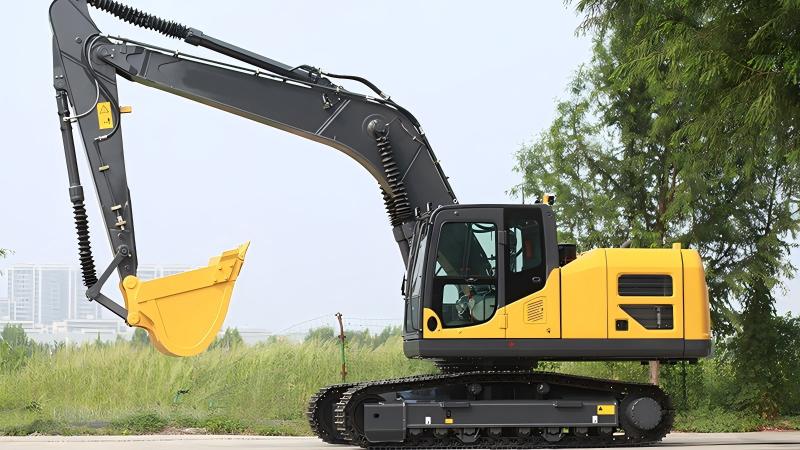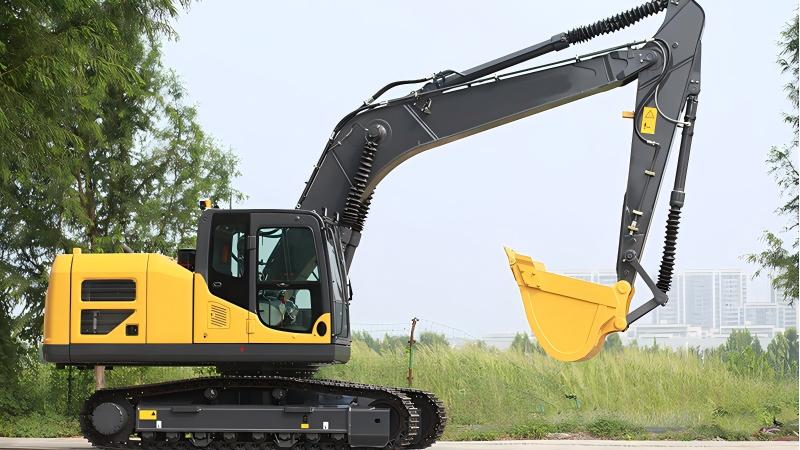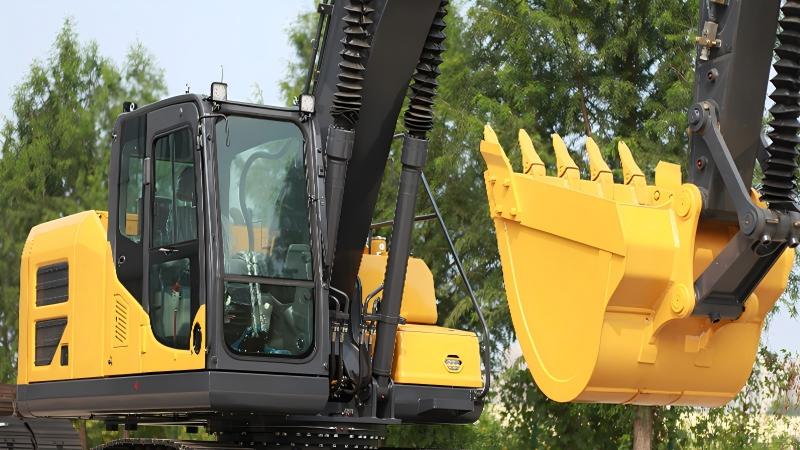Mini excavators, despite their compact size, are incredibly versatile machines, transforming from simple digging tools into multi-functional workhorses with the right attachments. Their ability to operate in confined spaces, minimize ground disturbance, and handle a surprising range of tasks makes them indispensable on construction sites, in landscaping, and for utility work. The true power of a mini excavator lies in the vast array of specialized attachments available, each designed to tackle a specific job more efficiently and effectively.
Understanding the various attachments can help operators and project managers maximize productivity, reduce labor costs, and achieve superior results. Let's delve into the most common and specialized attachments available for mini excavators.
Essential Digging and Earthmoving Attachments
These are the fundamental tools that allow a mini excavator to perform its primary function: moving earth.
Digging Buckets:
Standard/General Purpose Buckets: The most common type, ideal for digging in various soil conditions, general excavation, and loading. They come in various widths (e.g., 12-inch, 18-inch, 24-inch) with teeth for breaking ground.
Heavy Duty/Rock Buckets: Designed with thicker steel, reinforced wear plates, and robust teeth for penetrating hard ground, rocky soil, or breaking up asphalt.
Trenching Buckets: Narrower than standard buckets (e.g., 6-inch, 9-inch), specifically designed for digging narrow, deep trenches for utilities like water lines, electrical conduits, or irrigation systems.
V-Buckets: Feature a unique V-shape, perfect for creating V-shaped trenches for drainage or specialized piping.
Grading/Cleanup Buckets (Smooth Lip Buckets):
Wider and shallower than digging buckets, with a flat, smooth edge instead of teeth. They are ideal for finish grading, leveling, backfilling, ditch cleaning, and spreading material without leaving marks. Some feature a tilt function for creating precise slopes.
Thumbs (Hydraulic or Mechanical):
An invaluable addition that works in conjunction with a bucket to effectively act as a "thumb" and "forefinger." Thumbs allow the excavator to grasp, hold, and manipulate irregular objects like rocks, logs, brush, concrete debris, or pipes. They greatly enhance the machine's ability to clear land, sort materials, and load unconventional items.
Mechanical Thumbs: Manually adjustable, lower cost.
Hydraulic Thumbs: Operated from the cab, offering greater precision and efficiency.
Demolition and Breaking Attachments
For tasks requiring the breakdown of hard materials, these attachments transform a mini excavator into a demolition powerhouse.
Hydraulic Breakers (Hammers):
Perhaps the most common demolition attachment, these powerful tools use hydraulic force to deliver rapid, high-impact blows to break concrete, asphalt, rock, and other hard materials. They are indispensable for site prep, demolition of small structures, and breaking up concrete slabs or foundations where larger equipment is impractical. Different chisel tips are available for various breaking tasks (blunt, flat, moil, conical).
Hydraulic Shears/Pulverizers:
Designed for cutting through steel, concrete, rebar, and other demolition debris. Shears have powerful jaws that can snip through material, while pulverizers crush and separate concrete from rebar, making recycling easier. Primarily used for small-scale demolition and material processing.
Land Clearing and Vegetation Management Attachments
Mini excavators can be equipped to tackle brush, trees, and dense vegetation.
Brush Cutters/Mowers (Flail Mowers/Rotary Mowers):
These attachments are designed to clear overgrown vegetation, thick brush, and small trees. Flail mowers use numerous small hammers or blades to shred material, while rotary mowers use larger, rotating blades. Ideal for land clearing, maintaining trails, roadside vegetation management, and creating firebreaks.
Tree Shears/Grapples:
Tree Shears: Hydraulic shears specifically designed to cut small trees and large branches quickly and efficiently, often used in thinning operations or clearing fence lines.
Grapples: Beyond general-purpose grapples (which can handle brush and logs), specialized forestry grapples are designed for efficiently collecting, loading, and moving cut timber and brush.
Stump Grinders/Harvesters:
Attachments that use a rotating cutting wheel to grind tree stumps into mulch, eliminating the need for chemical treatments or manual removal. Stump harvesters are designed to dig out the entire stump and root ball.
Specialized Utility and Precision Attachments
These tools expand the mini excavator's utility for highly specific tasks.
Augers:
Hydraulically powered drilling attachments used to dig precise holes for fence posts, deck footings, tree planting, utility poles, and even helical piles. They come with various auger bits and extensions for different hole diameters and depths, and for various soil conditions (e.g., standard dirt, clay, rock).
Plate Compactors:
Vibratory attachments used to compact soil in trenches, around foundations, or for small paving projects. They attach to the end of the arm, allowing the operator to compact in tight spaces or on slopes where walk-behind compactors might be unsafe or impractical. They ensure a stable base and prevent settling.
Rippers:
A single, heavy-duty tooth attachment used to break up extremely hard ground, frozen soil, shale, or stubborn rock that a standard bucket cannot penetrate. Rippers effectively "rip" through dense material, making subsequent excavation easier.
Trenchers:
Unlike trenching buckets that scoop out material, a trencher attachment uses a chain with cutting teeth to continuously cut a narrow, deep trench. Ideal for long, continuous trenching runs for irrigation, drainage, or utility lines.
Pallet Forks:
Similar to those on a forklift, these attachments allow a mini excavator to lift and move palletized materials or other heavy objects around a job site. They require good balance and careful operation due to the excavator's boom action.
Grading Beams/Blades:
Designed for fine grading and leveling large areas. These wider, flatter attachments can precisely spread and smooth soil or gravel. Some models offer tilt and angle functions for even greater precision.
Enhancing Versatility: Quick Couplers and Tiltrotators
Beyond specific task-oriented attachments, certain innovations enhance the mini excavator's overall adaptability.
Quick Couplers (Quick Hitches):
These devices allow operators to rapidly switch between different attachments without manually changing pins. Available in mechanical (manual lever) or hydraulic (push-button from the cab) versions, quick couplers significantly reduce downtime and boost productivity, making it practical to use multiple attachments on a single project.
Tiltrotators:
A revolutionary attachment that adds an unprecedented level of dexterity. A tiltrotator provides 360-degree continuous rotation and up to 45 degrees of tilt in two directions for any attached tool. This means an operator can dig, grade, or manipulate objects with incredible precision and flexibility, often eliminating the need to reposition the entire excavator. While a significant investment, they dramatically increase efficiency for complex tasks.
Niche and Specialized Attachments
The innovation in mini excavator attachments continues, with new tools constantly emerging.
Post Drivers: For quickly driving fence posts or small poles into the ground.
Concrete Mixers: Small drum mixers that attach to the excavator, allowing for mixing and dispensing concrete directly where needed.
Rotary Harrows: For soil preparation, leveling, and working in additives.
Screening Buckets: Buckets with a mesh or rotating drums that separate fine material (soil, sand) from larger debris (rocks, roots).
Asphalt Cutters: A wheel attachment for precise cutting of asphalt surfaces.
Conclusion
The mini excavator's true strength lies not just in its compact power, but in its extraordinary adaptability through a wide array of attachments. From standard digging and grading to specialized demolition, land clearing, and precision utility work, these versatile tools transform a single machine into an entire fleet of specialized equipment.
When planning a project, consider the full spectrum of available attachments. Investing in or renting the right tools can lead to significant improvements in efficiency, accuracy, and safety, ultimately saving time and money while expanding the capabilities of your mini excavator to tackle virtually any challenge.
Post time:Sep-25-2020



